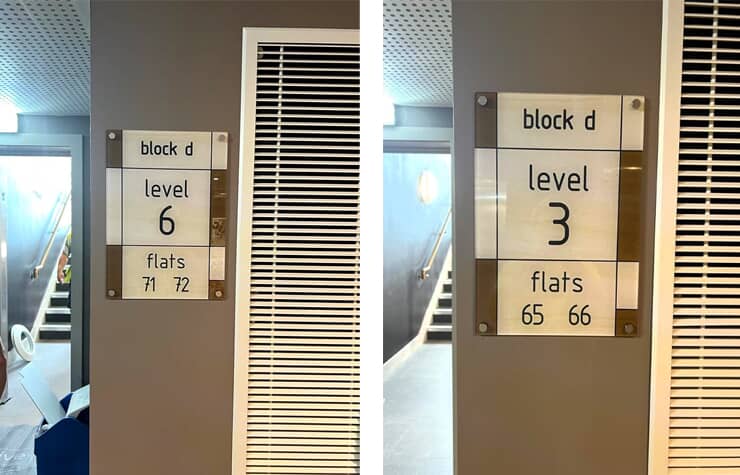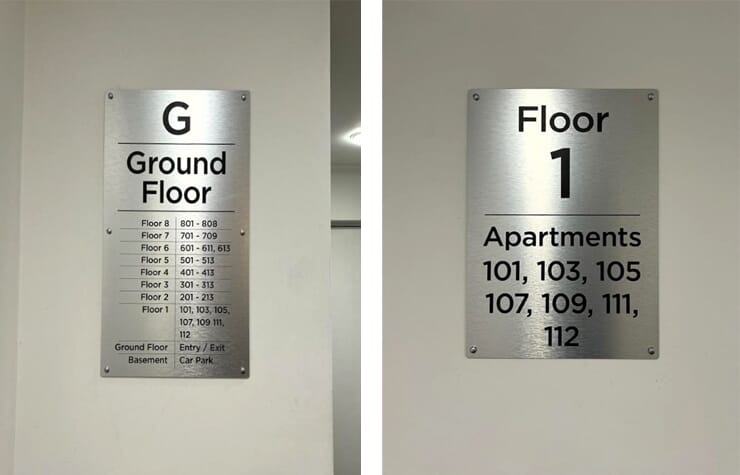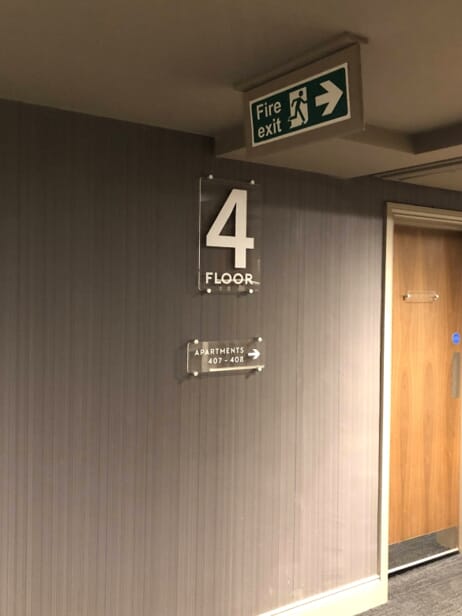The United Kingdom has always been at the forefront of ensuring the safety and security of its residents, and the latest update to its fire safety regulations is a testament to this commitment.
In 2023, the UK government introduced new fire safety regulations as a response to the Grenfell Tower tragedy and to proactively prevent future incidents for residents living in multi-dwelling establishments. The updated regulation made it a legal requirement for responsible persons, of high-rise residential buildings of7 storeys or more, to provide local fire and rescue services with appropriate safety information, including up-to-date building and external wall plans.
However, in research conducted by FASTSIGNS UK, we believe that, on average, fire and rescue services across the UK have received just 30 percent of high-rise building plans and 21 percent of external wall plans. The research sheds light on the percentage of building plans and external wall plans, submitted by qualifying high-rises across England, since the introduction of the regulation, using data from a series of Freedom of Information Requests (FOI), made to 18 fire services - compared against data for the number of high-rises each service serves.
The regulation was introduced in response to the 2017 Grenfell Tower tragedy. On-site emergency response teamsreported that navigating such a complex residential building, without clear directional signage, prevented them from carrying out their duties safely. Consequently, a recommendation was made that signage, building and external wall plans in multi-occupied high-rise residential buildings, should now be a legal requirement.

How FASTSIGNS Can Help
If multi-dwelling establishments are slow to provide information to their fire and rescue services, FASTSIGNS, as an expert signage provider, fears that the signage in these buildings remains underdeveloped. FASTSIGNS' experience in wayfinding solutions for multi-dwelling accommodation predates the fire regulation, however, when the changes were made, the FASTSIGNS management team prioritised the sharing of key information helping to ensure that each FASTSIGNS centre, operating in the UK, had a copy and understood the requirements.
Since then, FASTSIGNS has helped several establishments update their navigational signage, including supporting the GMI Construction Group, which developed four student accommodation buildings and required compliant wayfinding signage. FASTSIGNS were on hand to make recommendations on:
Identifying strategic locations for signage, including creating clear and visible informational signs, location identification, wayfinding signs for amenities and escape routes, as well as signs indicating the location of fire-fighting equipment.
Compliance in design and the use of appropriate materials, sizes, and symbols as stipulated by the regulations.
Installation and maintenance requirements to ensure signage is in good condition and remains compliant over time.

Applying Fire Safety Signage to Other Industries:
While the 2023 UK Fire Safety Regulations specifically target multi-dwelling establishments, the principles of clear and effective fire safety signage are universally applicable across various industries. Here are some ways in which these recommendations could be beneficial to other sectors:
Corporate Offices: Implementing clear evacuation maps and fire action notices can help ensure that employees know how to respond in the event of a fire.
Retail Spaces: High footfall areas require conspicuous signage to guide customers to safety, making the visibility and placement of signs crucial.
Educational Institutions: Schools and universities can benefit from tailored fire safety signage that takes into account the unique layout of their facilities and the need for age-appropriate instructions.
Healthcare Facilities: Hospitals and care homes must have clear and simple signage to cater to the needs of patients, many of whom may have limited mobility or cognitive abilities.
In conclusion, the new UK fire safety regulations set a high standard for fire safety practices and their successful implementation is crucial for the well-being of residents. FASTSIGNS' tailored services ensure that multi-dwelling establishments can confidently meet these standards. Moreover, the principles embedded in these regulations serve as a valuable guide for enhancing fire safety across all industries, making them a benchmark for best practices in safety signage and emergency preparedness.

Research Methodology:
FASTSIGNS UK contacted 18 Fire and Rescue Services in England, asking them to carry out Freedom of Information requests, for the latest information on building plans and external wall plans submitted, related to high-rise buildings in their jurisdiction.
The data included in the research was supplied by each corresponding Fire and Rescue Service. This makes up almost 50 per cent of all fire and rescue services in England - omitting any services that do not have buildings with 7 plus storeys covered by the Fire Safety (England) Regulation 2022.
The data includes the number of building plans and external wall plans received by fire services since The Fire Safety (England) Regulation came into play in January 2023 up to the end of October 23.
FASTSIGNS then carried out a separate Freedom of Information request, to determine how many high-rises are served by each fire service - which provided the opportunity to calculate the percentage of responses against the number of high-rise buildings. The data collated has been rounded to the nearest full number.
